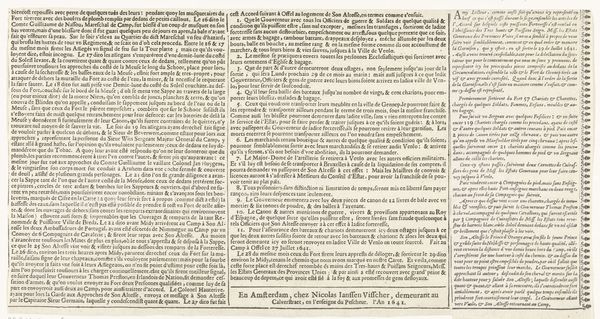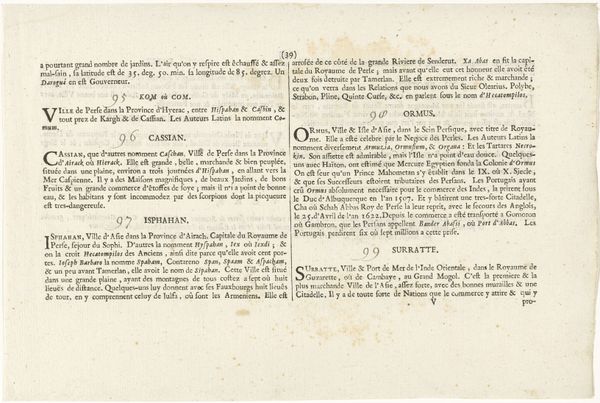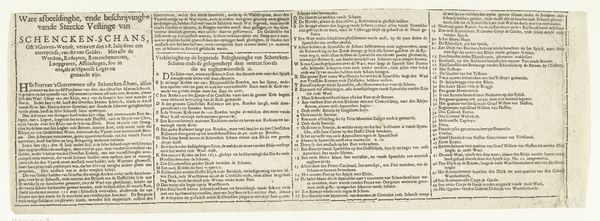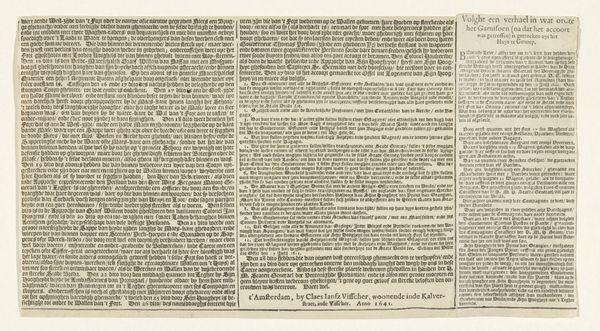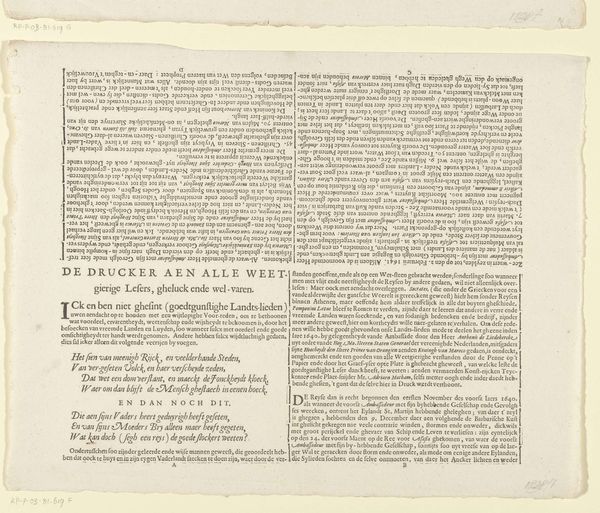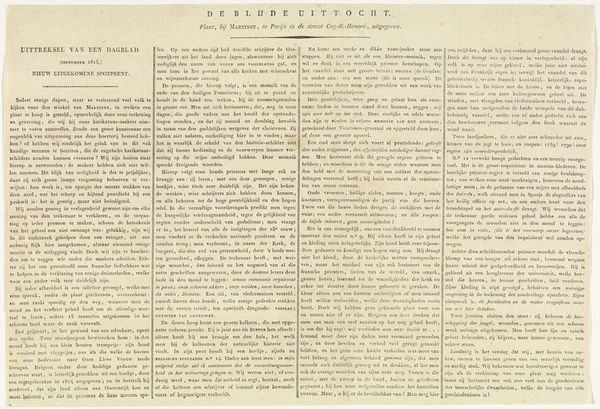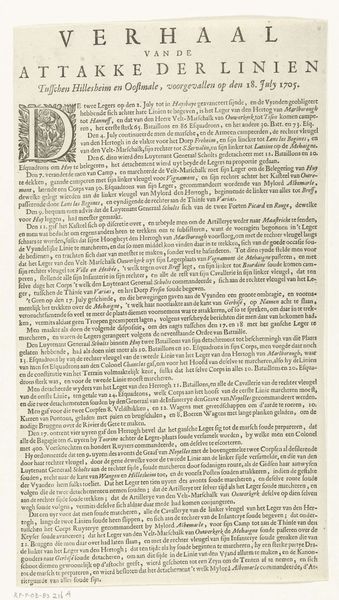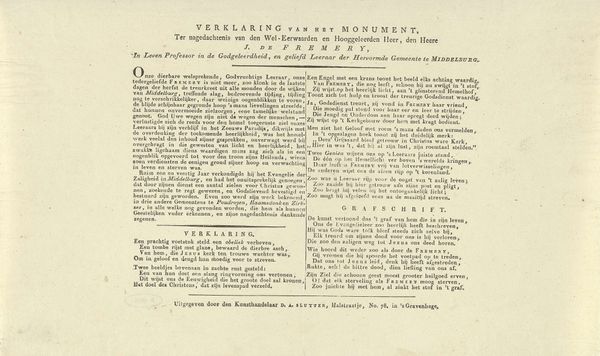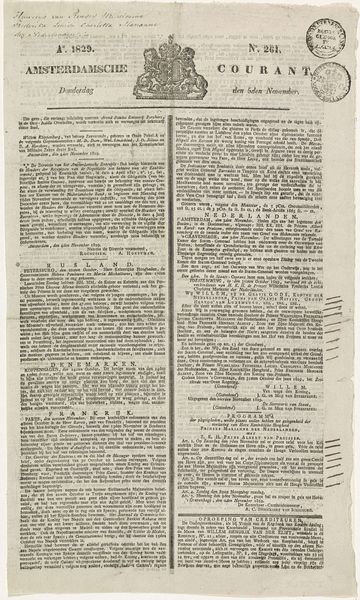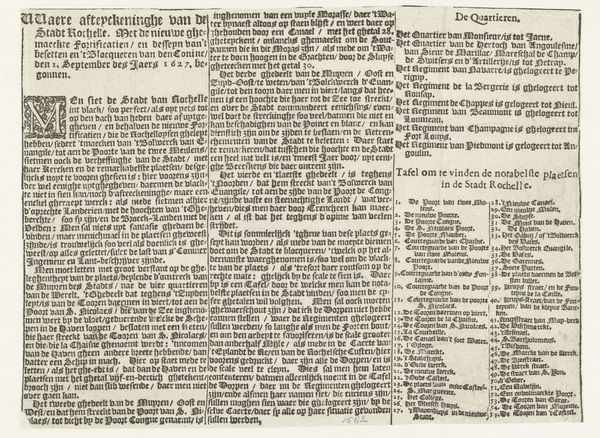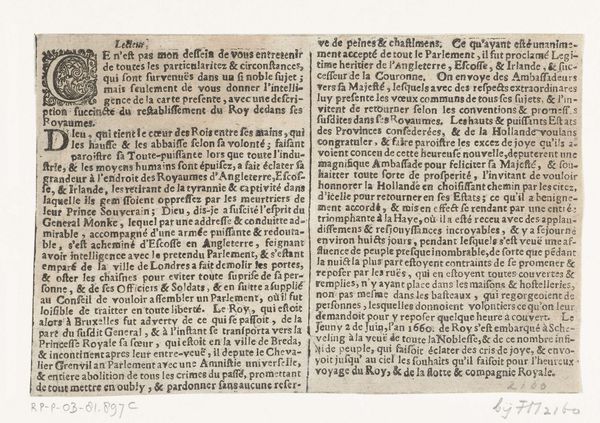
Teksten bij de prent van de wreedheden jegens de Ierse protestanten, 1642 1642
0:00
0:00
print, engraving
#
newspaper
#
baroque
#
dutch-golden-age
# print
#
small type
#
typographical layout
#
text
#
newspaper layout
#
history-painting
#
engraving
Dimensions: height 212 mm, width 295 mm
Copyright: Rijks Museum: Open Domain
This etching by Broer Jansz., made around 1642, depicts atrocities against Irish Protestants. A prominent symbol is the pervasive violence against women and children, a motif that speaks to themes of vulnerability and the breakdown of societal norms during conflict. Such imagery echoes across time. Consider how similar representations appear in Goya's Disasters of War, or even in ancient Roman depictions of conquered peoples. The motif of the tortured body, particularly of women, recurs as a potent symbol of subjugation and defilement. This motif has been passed down through history, often shifting in meaning but retaining its core emotional power to evoke shock and empathy. The image taps into our collective memory, stirring subconscious fears of chaos and vulnerability. These depictions exploit our deepest anxieties about the safety of our loved ones. The cyclical nature of such atrocities highlights a grim reality: these symbols resurface, evolve, and find new contexts, revealing the enduring power of visual language to convey the depths of human suffering.
Comments
No comments
Be the first to comment and join the conversation on the ultimate creative platform.
